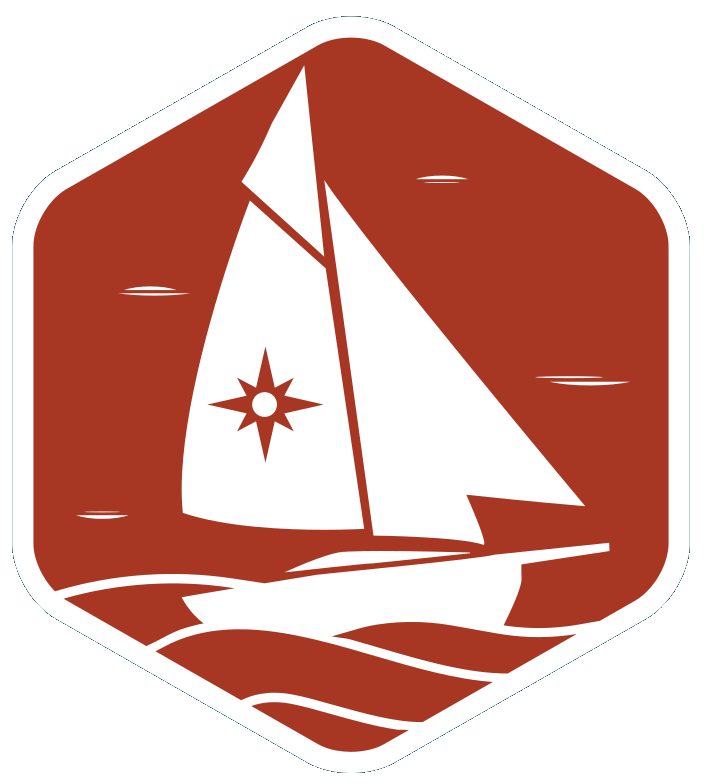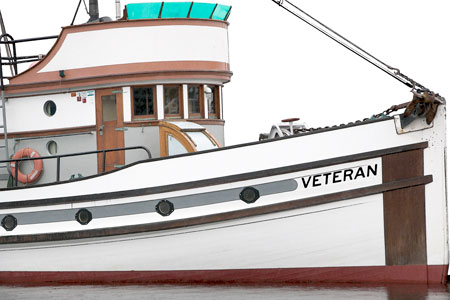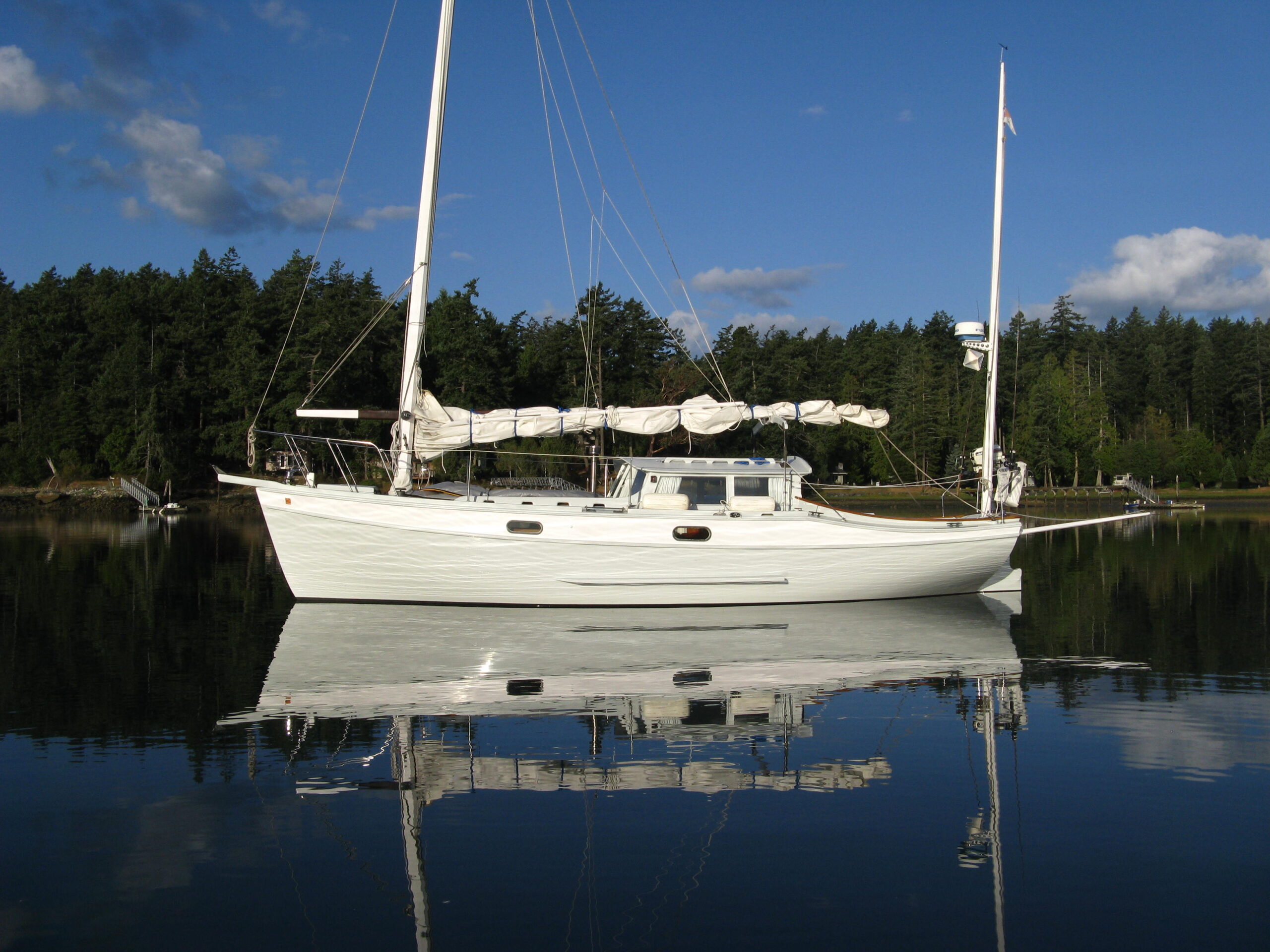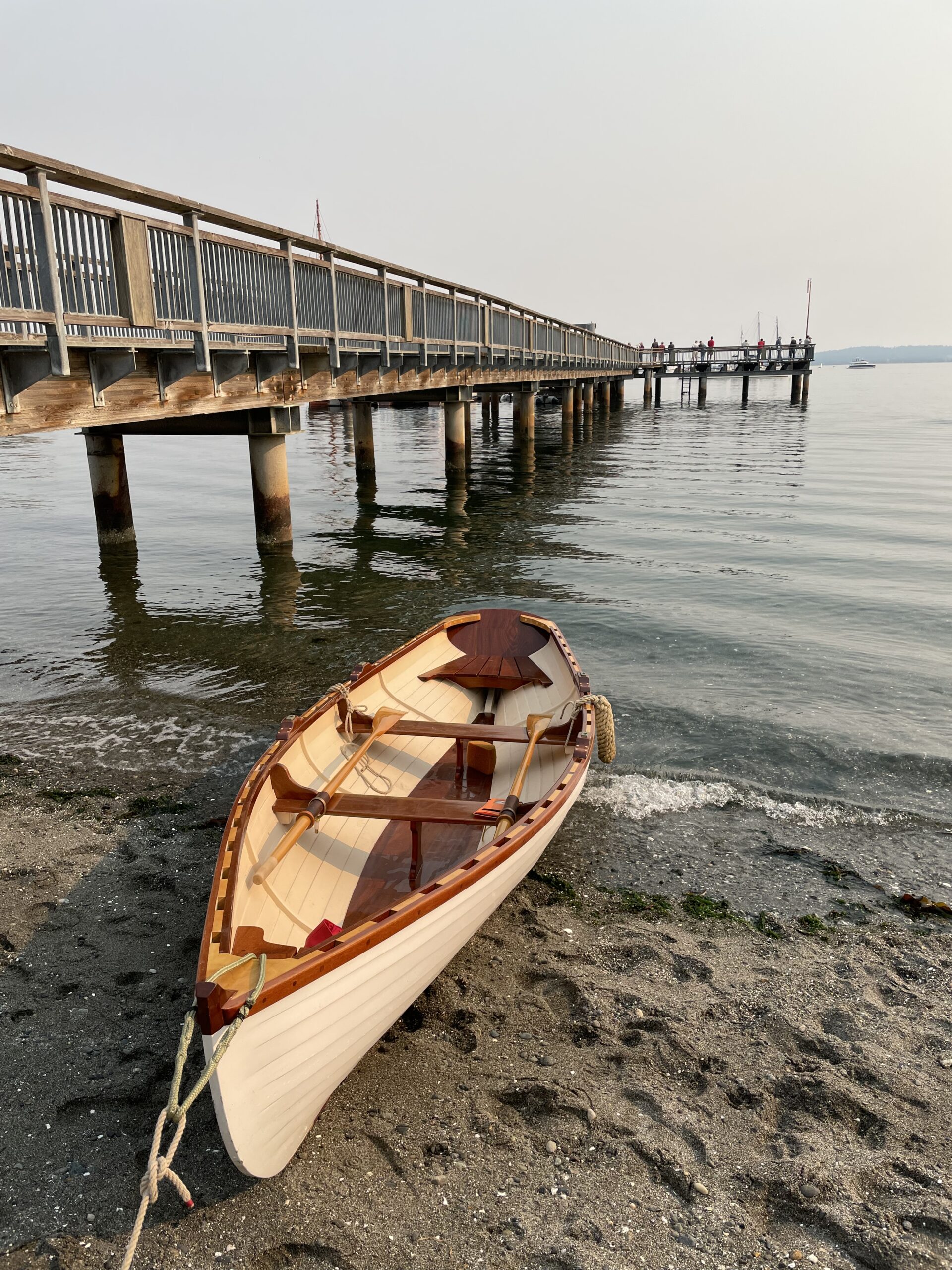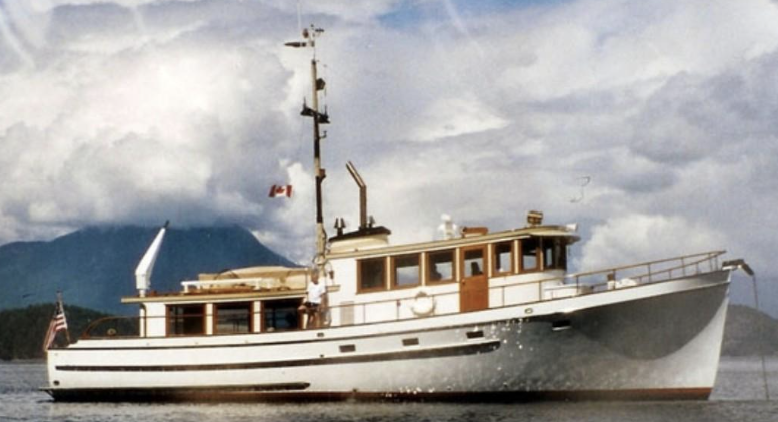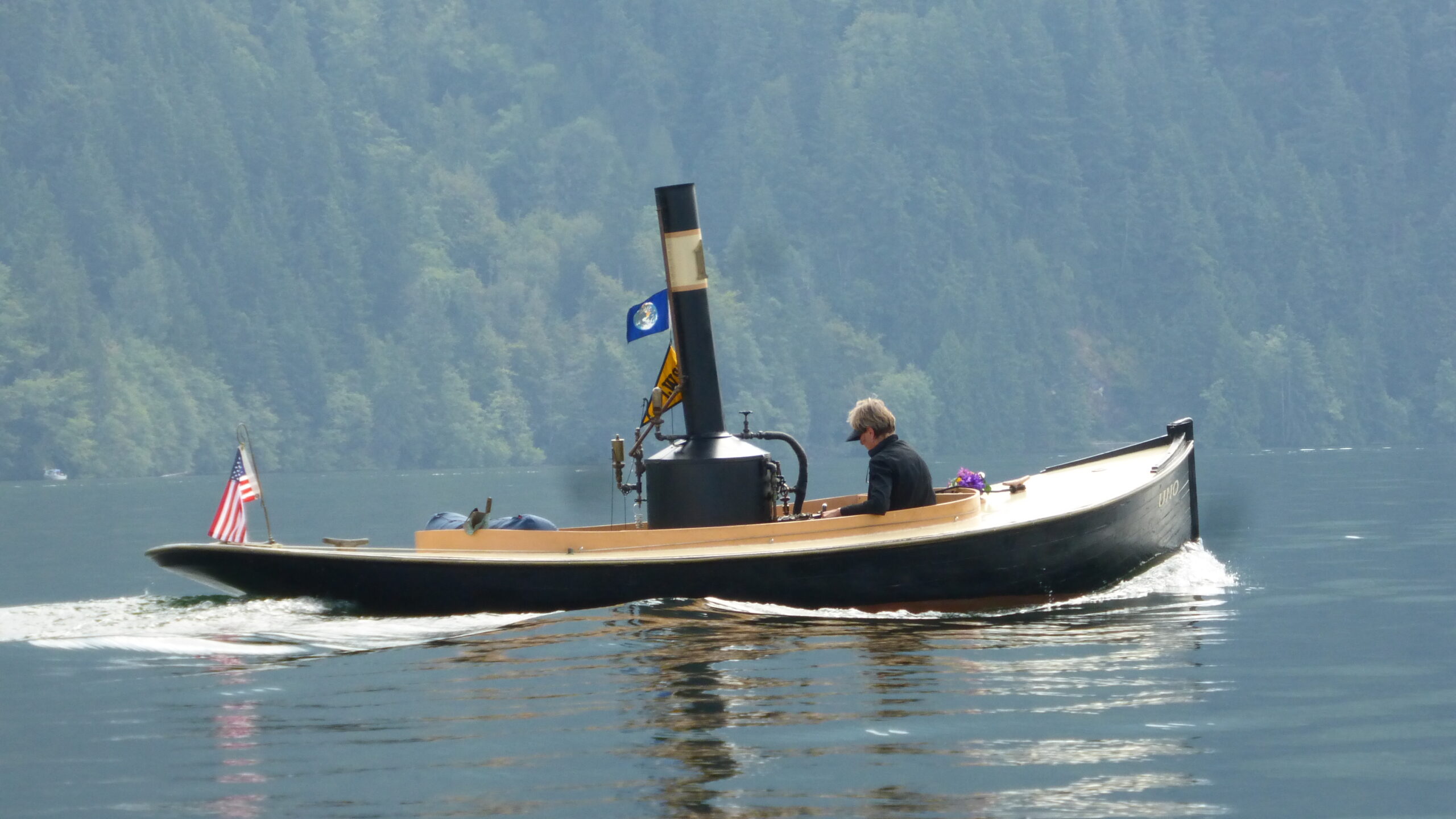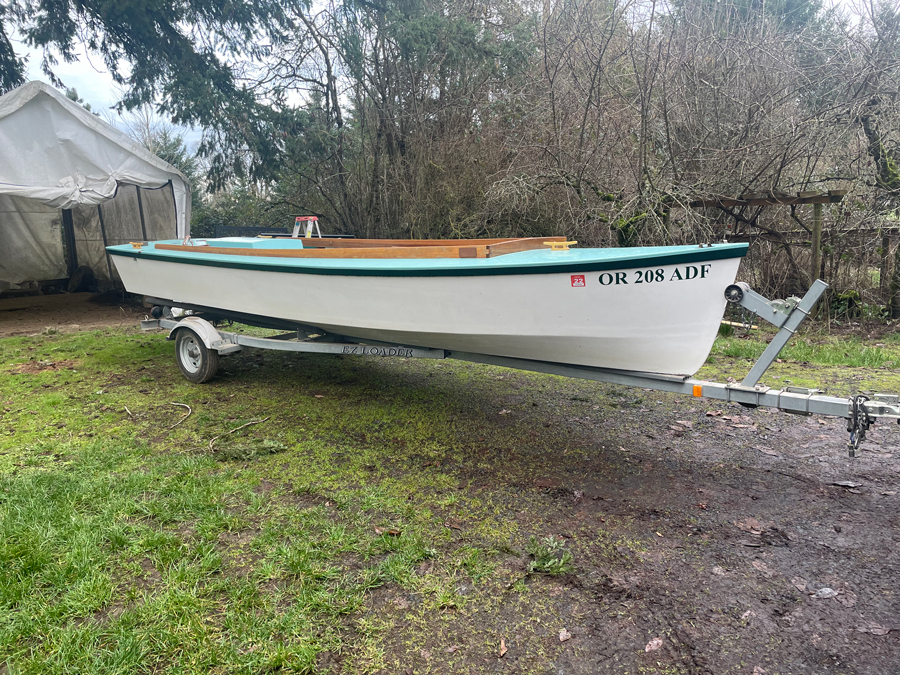
For Sale
A Northwest built version of a William Atkins “Rescue Minor” Article by James Thomas from Small Craft Advisor Magazine
For some years I’d heard stories about a boat an acquaintance of mine, Mark Nelson, a skilled carpenter and machinist had built to allow his wife Lark and he to take day trips on the Rivers and Lakes in Oregon. Knowing my interest in all things boats, my friend Lynn Fox, suggested I contact Lark to see the boat. Mark passed away a couple of years ago, and Lark was interested in my opinion related to selling the boat; so I called Lark.
She said it was a Rescue Minor, designed in the 1940s by William Atkins as a shallow water boat for rescues and salvage work. My usual interest is sailboats, but the name of a famous designer piqued my interest so we made arrangements for me to visit her in rural Washington County, Oregon outside Hillsboro. We’d look at the boat, she’d share some notes Mark had made during it’s construction and then we’d head into Hillsboro for pizza, beer, and some local jazz.
So on a Tuesday afternoon I drove out to Lark’s place. She’d pulled the boat, named Black Dogs out of it’s shelter where it has sat since Mark’s death. I could see the appeal to Mark in the design. With a big open unobstructed hull, there was plenty of room for taking friends on picnics and with the unusual shallow draft stern design with the prop tucked up into the hull, the boat would be able to navigate the shallow waters of the Columbia River estuary islands with ease and could be camped on in a pinch. I’d seen pictures of versions of this boat gussied up with center console and varnished decks, but Mark’s was the real deal; a simple, elegant, tiller steered open boat with mahogany coaming, but workboat finishes otherwise. Lark shared Mark’s notes after he’d completed the build and we headed to Hillsboro for pizza and jazz.
It’s always sad when someone lavishes years and countless hours on building a boat they hope will become longtime part of the family and their hopes are cut short by an untimely death. Later, when I’d had a chance to look over Mark’s notes, I was especially struck by the thought and effort he put into creating the powerplant for the boat as well as to translating Atkin’s drawings into this boat. Mark was a consummate craftsman who created a truly unusual historic craft I felt was worth sharing with my fellow small craft lovers. In that spirit, I’ll let Mark’s description of his boat and it’s engine build conclude this article.
ENGINE CHOICE AND MODIFICATIONS
A significant amount of my time building the boat was dedicated to the engine build. The boat as Atkin designed it was originally powered by a 63 cubic inch Atomic Four engine. I converted a 1988 Chevrolet Sprint 61 cubic inch, 3 cylinder engine for powering the boat. This is identical to the Suzuki from which the Sprint was derived. The engine turns a 10” x 13” three blade propeller through a ZF-10 reverse gear with a 1.8 to 1 reduction. The carburetor is a single downdraft Solex carburetor from a Volvo Penta outdrive. A Seacamp heat exchanger provides for fresh water cooling for the aluminum block, head, and exhaust manifold. A Vetus muffler takes some the noise out of the exhaust, although it is louder than I had hoped when the engine is run at higher power settings. The raw water pump is from a Kohler generator set, and an ignition-protected Leece-Neville alternator provides charging current. The Sprint engine has more power than the hull requires, so the engine runs at fairly low throttle settings. Fuel consumption is typically under 1 gph. I have seen 18 mph on the GPS, but the boat throws a lot of spray at that speed and the engine is annoyingly loud. 10 to 12 mph is a more comfortable cruising speed. For the first season, I ran the engine without a cover. Adding the engine cover reduced noise a good deal. “
USING BLACK DOGS:
“One of the pleasures of this boat is how easily and quietly it will slip along at about three knots. This is just right for keeping company with someone in a kayak or taking in the scenery in a backwater. The hull is so easily driven at low speeds that an electric motor could be an alternative if a limited range weren’t a problem.
This is a much different boat than a modern 20 ft. fiberglass inboard designed to pull wakeboarders or go for a Sunday drinking party. The area under the foredeck holds the anchor, extra life vests and sand chairs. The 11 gallon fuel tank, spare parts, extra lines, etc. are under the stern deck. The battery and tools are under the bench seat. Current formal seating accommodates the pilot and two passengers, anybody else gets a folding chair.
There are any number of improvements that could be made, but at this point I am content to use it as a day boat on the rivers and lakes here in western Oregon. I chose to build the boat using plywood plank on frame because I was reasonably confident of a successful outcome since I was familiar with the method, but it could also have been executed in stitch and glue or using welded aluminum construction. A light removable top would give some protection from the summer sun and extend the cool weather boating season and removable bunk boards would let us sleep on the boat easier
